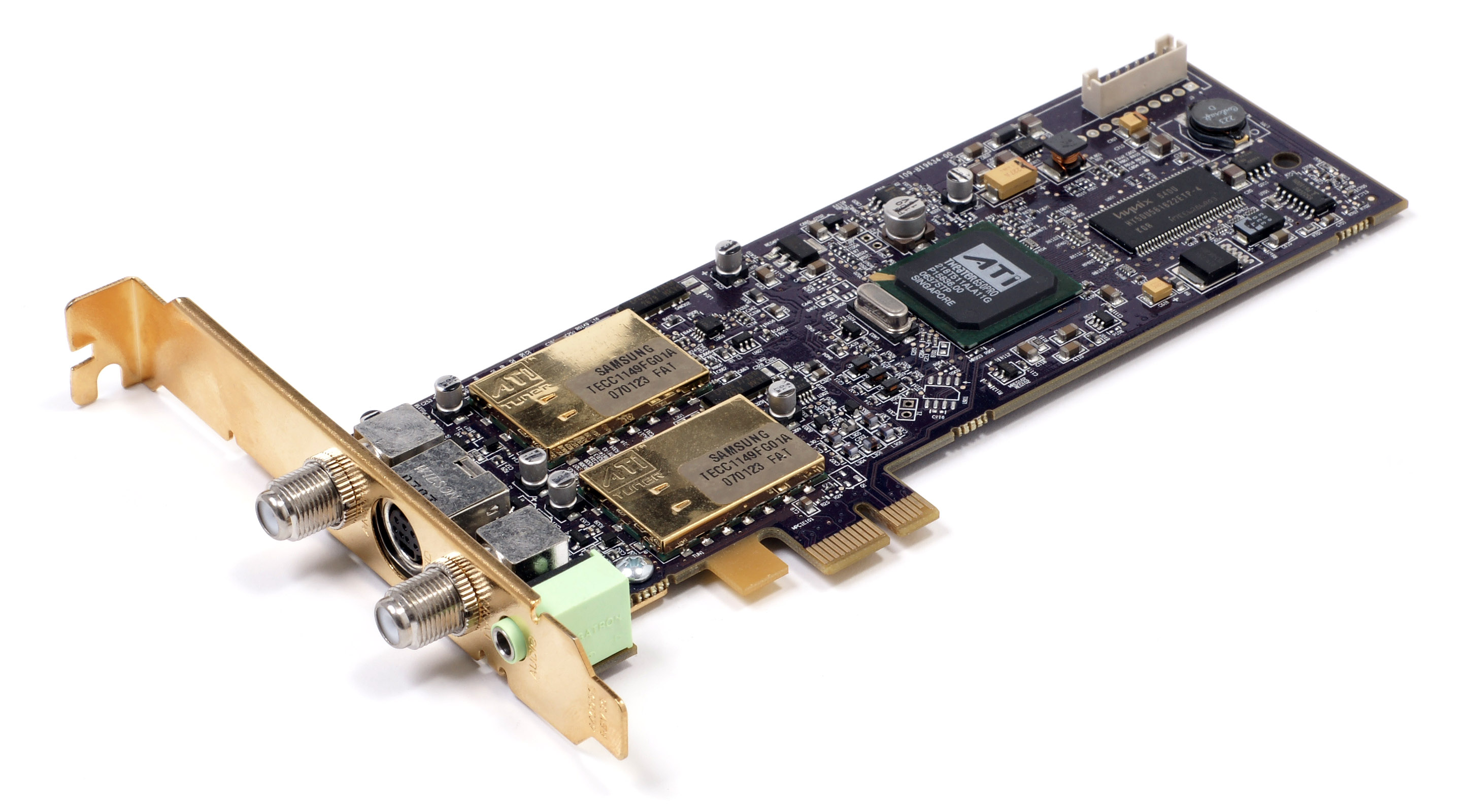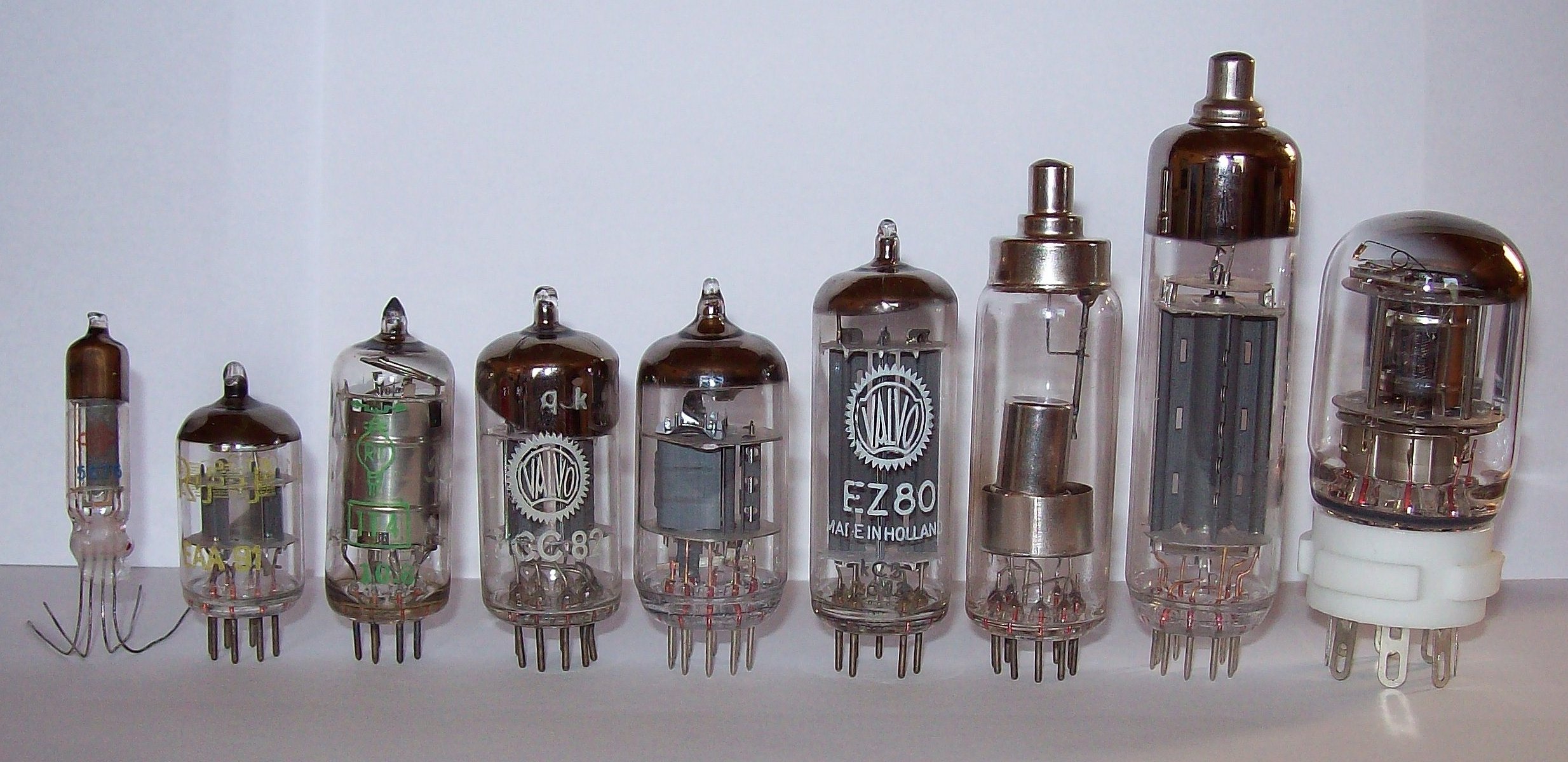|
Multi-standard Television
Multi-standard television sets were made for use in the television industry, so that one TV set or monitor could show video content from other television systems. Multistandard is only used with analogue television. In digital television, there are different standards, like DVB, ISDB, and ATSC. However, digital multistandard television sets are not exist. Multistandard digital TV devices may be in the form of TV tuner cards. Phillips produced a valve TV set that could receive most 625 lines and 819 line television systems. In the United Kingdom, there were quite a number of TV sets produced that were capable of receiving both monochrome 405 line and 625 line PAL-I broadcasts. These sets usually had a large relay or relays that would switch the circuits, through manual control. The USSR and PAL in SECAM countries In the mid-1980s, the Soviet Union implemented a program, in which it would be mandatory for new colour TV sets sold to include PAL also, in view to migrating to PA ... [...More Info...] [...Related Items...] OR: [Wikipedia] [Google] [Baidu] |
ISDB
Integrated Services Digital Broadcasting (ISDB; Japanese: , ''Tōgō dejitaru hōsō sābisu'') is a Japanese broadcasting standard for digital television (DTV) and digital radio. ISDB supersedes both the NTSC-J analog television system and the previously used MUSE Hi-vision analog HDTV system in Japan. An improved version of ISDB-T ( ISDB-T International) will soon replace the NTSC, PAL-M, and PAL-N broadcast standards in South America and the Philippines. Digital Terrestrial Television Broadcasting (DTTB) services using ISDB-T started in Japan in December 2003, and since then, many countries have adopted ISDB over other digital broadcasting standards. A newer and "advanced" version of the ISDB standard (that will eventually allow up to 8K terrestrial broadcasts and 1080p mobile broadcasts via the VVC codec, including HDR and HFR) is currently under development. Countries and territories using ISDB-T Asia * * (officially adopted ISDB-T, started broadcasting in di ... [...More Info...] [...Related Items...] OR: [Wikipedia] [Google] [Baidu] |
TV Tuner Card
A TV tuner card is a kind of television tuner that allows television signals to be received by a computer. Most TV tuners also function as video capture cards, allowing them to record television programs onto a hard disk much like the digital video recorder (DVR) does. The interfaces for TV tuner cards are most commonly either PCI bus expansion card or the newer PCI Express (PCIe) bus for many modern cards, but PCMCIA, ExpressCard, or USB devices also exist. In addition, some video cards double as TV tuners, notably the ATI All-In-Wonder series. The card contains a tuner and an analog-to-digital converter (collectively known as the analog front end) along with demodulation and interface logic. Some lower-end cards lack an onboard processor and, like a Winmodem, rely on the system's CPU for demodulation. Types There are many types of tuner cards. Analog tuners Analog television cards output a raw video stream, suitable for real-time viewing but ideally requiring some ... [...More Info...] [...Related Items...] OR: [Wikipedia] [Google] [Baidu] |
Vacuum Tube
A vacuum tube, electron tube, thermionic valve (British usage), or tube (North America) is a device that controls electric current flow in a high vacuum between electrodes to which an electric voltage, potential difference has been applied. It takes the form of an evacuated tubular envelope of glass or sometimes metal containing electrodes connected to external connection pins. The type known as a thermionic tube or thermionic valve utilizes thermionic emission of electrons from a hot cathode for fundamental Electronics, electronic functions such as signal amplifier, amplification and current Rectifier, rectification. Non-thermionic types such as vacuum phototubes achieve electron emission through the photoelectric effect, and are used for such purposes as the detection of light and measurement of its intensity. In both types the electrons are accelerated from the cathode to the anode by the electric field in the tube. The first, and simplest, vacuum tube, the diode or Flem ... [...More Info...] [...Related Items...] OR: [Wikipedia] [Google] [Baidu] |
625 Lines
625-line (or CCIR 625/50) is a late 1940s European analog standard-definition television resolution standard. It consists of a 625-line raster, with 576 lines carrying the visible image at 25 interlaced frames per second. It was eventually adopted by countries using 50 Hz utility frequency as regular TV broadcasts resumed after World War II. With the introduction of color television in the 1960s, it became associated with the PAL and SECAM analog color systems. A similar 525-line system was adopted by countries using 60 Hz utility frequency (like the US). Other systems, like 375-line, 405-line, 441-line, 455-line and 819-line existed, but became outdated or had limited adoption. The modern standard-definition digital video resolution 576i is equivalent and can be used to digitize an analogue 625-line TV signal, or to generate a 625-line compatible analog signal. History At the CCIR Stockholm Conference in July 1948 a first 625-line system with an 8 ... [...More Info...] [...Related Items...] OR: [Wikipedia] [Google] [Baidu] |
819 Line
819-line was an analog monochrome TV system developed and used in France as television broadcast resumed after World War II. Transmissions started in 1949 and were active up to 1985, although limited to France, Belgium and Luxembourg. It is associated with CCIR System E and F. History When Europe resumed TV transmissions after World War II (i.e. in the late 1940s and early 1950s) most countries standardized on 625-line television systems. The two exceptions were the British 405-line system, which had already been introduced in 1936, and the French 819-line system. During the 1940s René Barthélemy had already reached 1,015 lines and even 1,042 lines. On November 20, 1948, François Mitterrand, the then Secretary of State for Information, decreed a broadcast standard of 819 lines developed by Henri de France; broadcasting began at the end of 1949 in this higher definition format. It was used in France by TF1, and in Monaco by Tele Monte Carlo. Some 819-line TV sets ... [...More Info...] [...Related Items...] OR: [Wikipedia] [Google] [Baidu] |
405 Line
The 405-line monochrome analogue television broadcasting system was the first fully electronic television system to be used in regular broadcasting. The number of television lines influences the image resolution, or quality of the picture. It was introduced with the BBC Television Service in 1936, suspended for the duration of World War II, and remained in operation in the UK until 1985. It was also used between 1961 and 1982 in Ireland, as well as from 1957 to 1973 for the Rediffusion Television cable service in Hong Kong. 405-line was approved as System A in the CCIR assignment of broadcast systems. Sometimes called the Marconi-EMI system, it was developed in 1934 by the EMI Research Team led by Isaac Shoenberg. The figure of 405 lines had been chosen following discussions over Sunday lunch at the home of Alan Blumlein. The system used interlacing; EMI had been experimenting with a 243-line all-electronic interlaced system since 1933. In the 405 system the scanning ... [...More Info...] [...Related Items...] OR: [Wikipedia] [Google] [Baidu] |
Soviet Union
The Union of Soviet Socialist Republics. (USSR), commonly known as the Soviet Union, was a List of former transcontinental countries#Since 1700, transcontinental country that spanned much of Eurasia from 1922 until Dissolution of the Soviet Union, it dissolved in 1991. During its existence, it was the list of countries and dependencies by area, largest country by area, extending across Time in Russia, eleven time zones and sharing Geography of the Soviet Union#Borders and neighbors, borders with twelve countries, and the List of countries and dependencies by population, third-most populous country. An overall successor to the Russian Empire, it was nominally organized as a federal union of Republics of the Soviet Union, national republics, the largest and most populous of which was the Russian SFSR. In practice, Government of the Soviet Union, its government and Economy of the Soviet Union, economy were Soviet-type economic planning, highly centralized. As a one-party state go ... [...More Info...] [...Related Items...] OR: [Wikipedia] [Google] [Baidu] |
TAFE
Technical and further education or simply TAFE () is the common name in Australia for vocational education, as a subset of tertiary education. TAFE institutions provide a wide range of predominantly vocational courses. Colloquially also known as "Tech". Individual TAFE institutions (usually with numerous campuses) are known as either colleges or institutes, depending on the state or territory. In Australia, where the term TAFE originated, institutions usually host qualifying courses, under the National Training System/ Australian Qualifications Framework/VET Quality Framework. Fields covered include business, finance, hospitality, tourism, construction, engineering, visual arts, information technology and community work. TAFE colleges are owned, operated and financed by the various state/territory governments. Qualifications awarded by TAFE colleges TAFE colleges award Australian Qualifications Framework (AQF) qualifications accredited in the Vocational Education and Train ... [...More Info...] [...Related Items...] OR: [Wikipedia] [Google] [Baidu] |
SECAM
SECAM, also written SÉCAM (, ''Séquentiel de couleur à mémoire'', French for ''sequential colour memory''), is an analog color television system that was used in France, Russia and some other countries or territories of Europe and Africa. It was one of three major analog color television standards, the others being PAL and NTSC. Like PAL, a SECAM picture is also made up of 625 interlaced lines and is displayed at a rate of 25 frames per second (except SECAM-M). However, due to the way SECAM processes color information, it is not compatible with the PAL video format standard. SECAM video is composite video; the luminance (luma, monochrome image) and chrominance (chroma, color applied to the monochrome image) are transmitted together as one signal. All the countries using SECAM have either converted to DVB, Digital Video Broadcasting (DVB), the new pan-European standard for digital television, or are currently in the Digital television transition, process of conversion. S ... [...More Info...] [...Related Items...] OR: [Wikipedia] [Google] [Baidu] |
NTSC
NTSC (from National Television System Committee) is the first American standard for analog television, published and adopted in 1941. In 1961, it was assigned the designation System M. It is also known as EIA standard 170. In 1953, a second NTSC standard was adopted, which allowed for color television broadcast compatible with the existing stock of black-and-white receivers. It is one of three major color formats for analog television, the others being PAL and SECAM. ''NTSC color'' is usually associated with the System M; this combination is sometimes called NTSC II. The only other broadcast television system to use NTSC color was the System J. Brazil used System M with PAL color. Vietnam, Cambodia and Laos used System M with SECAM color – Vietnam later started using PAL in the early 1990s. The NTSC/System M standard was used in most of the Americas (except Argentina, Brazil, Paraguay, and Uruguay), Myanmar, South Korea, Taiwan, Philippines, Japan, and some Pacific Isl ... [...More Info...] [...Related Items...] OR: [Wikipedia] [Google] [Baidu] |
Chrominance
Chrominance (''chroma'' or ''C'' for short) is the signal used in video systems to convey the color information of the picture (see YUV color model), separately from the accompanying Luma (video), luma signal (or Y' for short). Chrominance is usually represented as two color-difference components: U = B-Y, B′ − Y′ (blue − luma) and V = R-Y, R′ − Y′ (red − luma). Each of these different components may have scale factors and offsets applied to it, as specified by the applicable video standard. In composite video signals, the U and V signals modulate a color subcarrier signal, and the result is referred to as the chrominance signal; the Phase (waves), phase and amplitude of this modulated chrominance signal correspond approximately to the hue and Saturation (color theory), saturation of the color. In digital-video and still-image color spaces such as Y′CbCr, the luma and chrominance components are digita ... [...More Info...] [...Related Items...] OR: [Wikipedia] [Google] [Baidu] |




